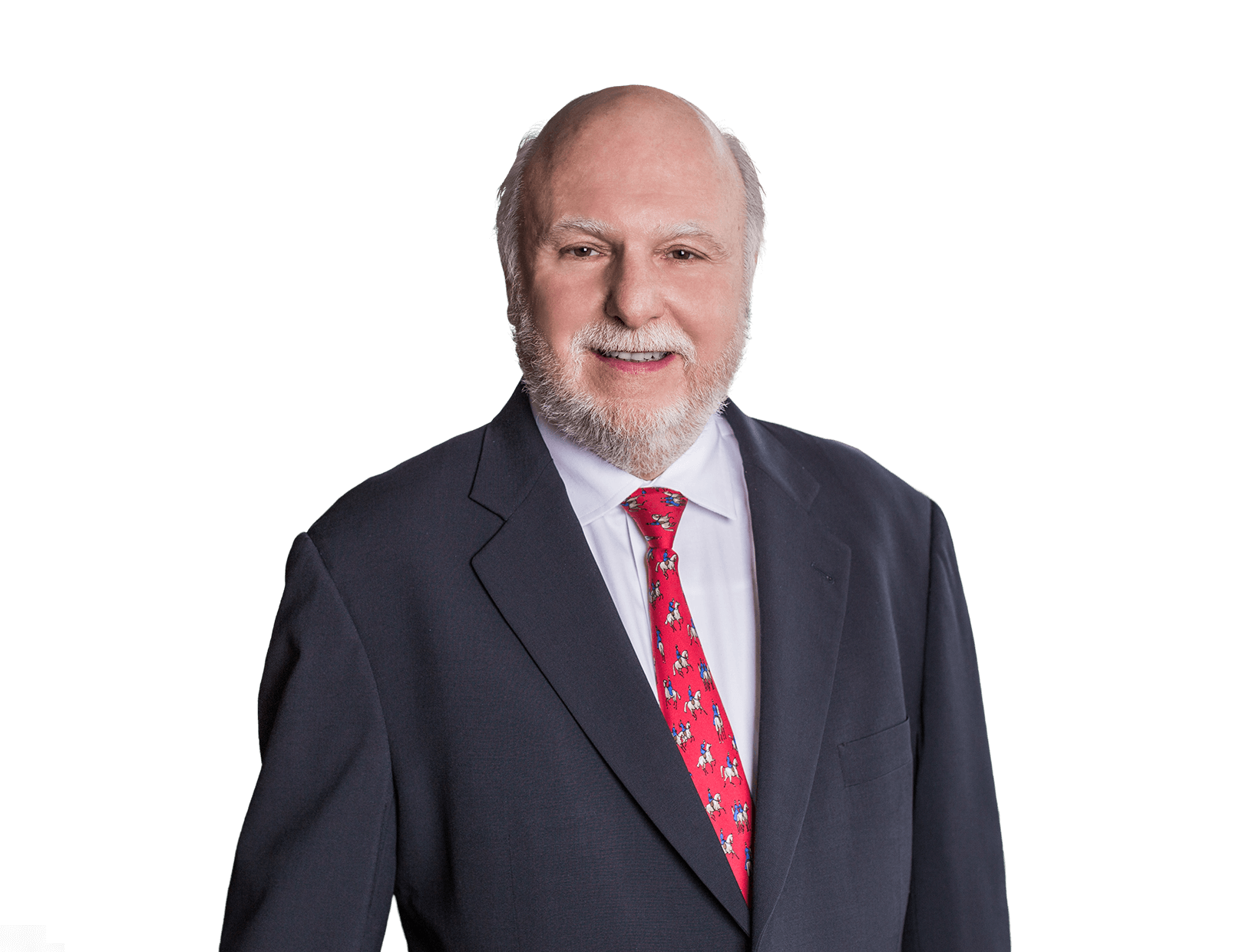Blog
REGENXBIO v. SAREPTA: Make Sure You're Safely Within the Safe Harbor Before Using a "Research Tool"
Fish & Richardson
Authors
-
- Name
- Person title
- Of Counsel

-
- Name
- Person title
- Principal

Disclaimer: Fish and Richardson P.C. represents REGENXBIO Inc. in this matter.
Are patented products that are not themselves subject to FDA approval, but used to develop products that are subject to FDA approval, protected under the Hatch-Waxman safe harbor? While courts have reached different conclusions on this question,1 one recent district court decision answered it with a resounding "No."2
Statutory Background
The safe harbor provision was enacted as part of the Hatch-Waxman Act. It provides:
It shall not be an act of infringement to make, use, offer to sell, or sell within the United States or import into the United States a patented invention . . . solely for uses reasonably related to the development and submission of information under a Federal law which regulates the manufacture, use, or sale of drugs or veterinary biological products.
35 U.S.C. § 271(e)(1)(emphasis added). As the Federal Circuit explained in Proveris Sci. Corp. v. Innovasystems Inc., 536 F.3d 1256, 1260 (Fed. Cir. 2008), the Hatch-Waxman Act was intended to eliminate "two unintended distortions of the effective patent term resulting from the premarket approval required for certain products by the [Food, Drug, and Cosmetic Act]." The first distortion, the reduction of effective patent life, resulted when patent applications were filed during the regulatory process but the "early years of the patent term were spent obtaining premarket approval rather than generating profits."3 Title 35, U.S.C. § 156 corrected this distortion by extending patent terms for a limited period to compensate for the regulatory delays caused by FDA's premarket approval process.4
The second distortion was a "de facto extension of effective patent life at the end of the patent term."5 Prior to the safe harbor, any manufacture, use, or sale of a patented invention was an act of infringement, even if such conduct was solely conducted to obtain FDA approval.6 Given this statutory regime, competitors would not even be able to prepare to market their pharmaceutical products or seek FDA approval until expiration of any blocking patents.7 This gave the patent holder an unofficial patent term extension.8 This distortion was remedied by the enactment of the safe harbor, which shielded infringing acts as the purported infringers began the FDA approval process.9
REGENXBIO v. SAREPTA
REGENXBIO alleged that Sarepta's use of REGENXBIO's patented cultured host cells to make recombinant adeno-associated virus (rAAV) gene therapy products infringed REGENXBIO's U.S. Patent No. 10,526,617.10 Sarepta uses the patented cultured host cells to develop its SRP-9001 gene therapy product, which is used to treat Duchenne muscular dystrophy.11 Sarepta moved to dismiss and argued that its conduct was "solely related to the development and future submission of a Biologics License Application to the FDA" and, thus, was protected under the safe harbor.12 As relevant here, REGENXBIO responded that the patented products — cultured host cells — were not themselves subject to FDA premarket approval and, therefore, were not protected by the safe harbor.13
Judge Andrews of the District Court for the District of Delaware began his analysis by noting that REGENXBIO's argument was predominantly based on the Federal Circuit's decision in Proveris.14 There, Innova's Optical Spray Analyzer ("OSA") was accused of infringing a Proveris patent.15 The OSA was not itself subject to FDA approval, but was used to create data for an FDA submission of a final product.16 In that sense, the OSA was a "research tool." Recognizing that Innova's OSA was not subject to FDA premarket approval, the Federal Circuit held that Innova "face[d] no regulatory barriers to market entry upon patent expiration" and, thus, could not have been affected by the second distortion that existed before the enactment of the Hatch-Waxman Act.17 The Federal Circuit also found that the patentee, Proveris, was "not a party who, prior to enactment of the Act, could be said to have been adversely affected by the first distortion," because its patented product was not subject to FDA premarket approval.18 Accordingly, the Federal Circuit held that the OSA was not a "patented invention" for purposes of § 271(e)(1).19 In the same vein, since the patented product did not require FDA premarket approval, it did not need the patent term extension provided by § 156(f).20
Sarepta countered that Proveris should be limited to its facts, i.e., only third-party suppliers of alleged infringing products were outside the safe harbor.21 Sarepta noted that Innova was not submitting anything to the FDA, but was merely selling the OSA to parties who then used the devices to gather data for an FDA submission.22 In contrast, Sarepta argued that it was using the REGENXBIO's patented product to obtain information to submit to FDA.23
Relying on the Proveris decision, Judge Andrews found no distinction existed in the caselaw between "defendants who used the patented product to obtain information to submit to the FDA and defendants who sold the patented product to third parties who used it to submit information to the FDA."24 The court also noted that this distinction was not supported by the language of the safe harbor, which provides an affirmative defense to infringement "to make, use, offer to sell, or sell . . . a patented invention . . . solely for uses reasonably related to the development and submission of information [to the FDA]."25 The court declined to limit the Proveris holding to third-party suppliers.26 Rather, Judge Andrews agreed with REGENXBIO's position that a patented product not subject to FDA approval is not a "patented invention" under § 271(e)(1).27 As a result, Sarepta uses the patented cultured host cells to develop their SRP-9001 gene therapy, but the cells themselves were not subject to FDA premarket approval, they did not constitute a "patented invention" under § 271(e)(1) and, thus, are not protected by the safe harbor.28
The court noted that several district courts have followed the Proveris decision, holding that "where the patented product is not subject to FDA premarket approval, the safe harbor does not apply."29 Just last year, the District Court for the Southern District of California came to an identical conclusion in Allele v. Pfizer.30 There, defendants Pfizer and BioNTech used Allele's patented mNeon Green product, "a fluorescent protein used as a biological tag in genetic engineering," to research and develop their SARS-CoV-2 vaccine.31 Defendants argued that all of their allegedly infringing activities were conducted to develop information to submit to the FDA.32 Relying on Proveris, the California court disagreed, holding that the safe harbor did not apply because Allele's patented proteins were not subject to FDA approval and, thus, did not constitute a "patented invention" under the safe harbor.33 Similarly, an Illinois district court held that research tools used in connection with S1P2 receptors not subject to FDA approval were not "patented inventions" protected by the safe harbor.34
The court rejected Sarepta's reliance on Teva Pharms. USA, Inc. v. Sandoz Inc., 2013 U.S. Dist. LEXIS 99121 (S.D.N.Y. July 16, 2013), which held that research tools were subject to the safe harbor.35 There, defendant Sandoz Inc. used Teva's patented polypeptide markers "suitable for calibrating chromatographic columns to measure the molecular weight characteristics of glatiramer acetate" to market and distribute Sandoz's generic glatiramer acetate product.36 Although the patented polypeptide markers were not subject to FDA approval, the Teva court found that Sandoz's use of the markers was covered by the safe harbor because Sandoz used them "solely for uses reasonably related to the development and submission of information under a federal law."37 Judge Andrews did not find the Teva court's reasoning persuasive, stating that Proveris "focused on whether the patented product and accused device were subject to FDA premarket approval."38
Finally, Judge Andrews rejected Sarepta's argument that the safe harbor applied to prevent the plaintiff from receiving an effective patent term extension.39 If the safe harbor did not apply, Sarepta argued that it would have to wait until the '617 patent expired to begin developing its gene therapy product.40 While the court recognized this may be true, it did not understand that such delay gave REGENXBIO a patent term extension.41 Sarepta was not using the patented cultured host cells to obtain FDA approval on a cultured host cell product and introduce that product to the market; hence Sarepta could immediately begin using the patented cultured host cells as soon as the '617 expired.42 Under these circumstances, Regenxbio would not receive any patent term extension.43
Given that Sarepta failed to demonstrate the facts in the complaint established infringing activity that is exempted by the
§ 271(e)(1) safe harbor, the Court denied Sarepta's motion to dismiss.44
Conclusion
Unlikely to be the last decision on the safe harbor provision, the REGENXBIO decision provides an excellent framework for understanding the two distortions that the safe harbor intended to fix, and how those distortions apply to real-life products.
[1] Compare Teva Pharms. USA, Inc. v. Sandoz Inc., No. 09-10112-KBF, 2013 U.S. Dist. LEXIS 99121, at *25-*26 (S.D.N.Y. July 15, 2013) with PSN Ill., LLC v. Abbott Labs. & Abbott Bioresearch Ctr., Inc., No. 09-cv-5879, 2011 U.S. Dist. LEXIS 108055, at *18 (N.D. Ill. Sep. 20, 2011).
[2] REGENXBIO Inc. v. Sarepta Therapeutics, Inc., No. 1:20-cv-1226-RGA, 2022 U.S. Dist. LEXIS 1945, at *12 (D. Del. January 4, 2022) [hereinafter, "REGENXBIO".]
[3] Proveris Sci. Corp., 536 F.3d at 1265 (citing Eli Lilly & Co. v. Medtronic, Inc., 496 U.S. 661, 669 (1990)).
[4] REGENXBIO, 2022 U.S. Dist. LEXIS, at *4; see also 35 U.S.C. § 156 (stating "The term of a patent which claims a product, a method of using a product, or a method of manufacturing a product shall be extended in accordance with this section from the original expiration date of the patent . . . if . . . (4) the product has been subject to a regulatory review period before its commercial marketing or use[.]").
[5] REGENXBIO, 2022 U.S. Dist. LEXIS, at *4 (citing Eli Lilly, 496 U.S. at 670).
[6] Id.; see also Roche Prods., Inc. v. Bolar Pharm. Co., 733 F.3d 858 (Fed. Cir. 1984).
[7] Id. at *5.
[8] Id.
[9] Id.
[10] Id. at *1.
[11] Id. at *2, *11.
[12] Id. at *5-*6.
[13] Id.
[14] Id.
[15] Proveris, 536 F.3d at 1259.
[16] Id.
[17] Id. at 1265.
[18] Id. at 1265-66.
[19] Id. at 1266.
[20] Id.
[21] REGENXBIO, 2022 U.S. Dist. LEXIS, at *8.
[22] Id.
[23] Id. at *9, *11.
[24] Id. at *9-*10.
[25] Id. at *10 (emphasis added).
[26] Id.
[27] Id.
[28] Id. at *11.
[29] Id. *7 (citing cases).
[30] Allele Biotech. & Pharms., Inc. v. Pfizer, Inc., 1:20-cv-01958-H-AGS, 2021 U.S. Dist. LEXIS 85347, at *18-*19 (S.D. Cal. May 4, 2021). See Fish's analysis of the Allele decision at https://www.fr.com/users-of-research-tools-take-note/.
[31] Id. at *2.
[32] Id. at *9.
[33] Id. at *18.
[34] PSN Ill., LLC v. Abbott Labs. & Abbott Bioresearch Ctr., Inc., No. 09-cv-5879, 2011 U.S. Dist. LEXIS 108055, at *18 (N.D. Ill. Sept. 20, 2011).
[35] REGENXBIO, 2022 U.S. Dist. LEXIS, at *9 (citing Teva Pharms., 2013 WL 3732867, at *7).
[36] Teva, 2013 U.S. Dist. LEXIS 99121, at *6-7.
[37] Id. at *25.
[38] REGENXBIO, 2022 U.S. Dist. LEXIS, at *9-*10.
[39] Id. at *11.
[40] Id.
[41] Id. at *11-*12.
[42] Id. at *12.
[43] Id.
[44] Id.
The opinions expressed are those of the authors on the date noted above and do not necessarily reflect the views of Fish & Richardson P.C., any other of its lawyers, its clients, or any of its or their respective affiliates. This post is for general information purposes only and is not intended to be and should not be taken as legal advice. No attorney-client relationship is formed.